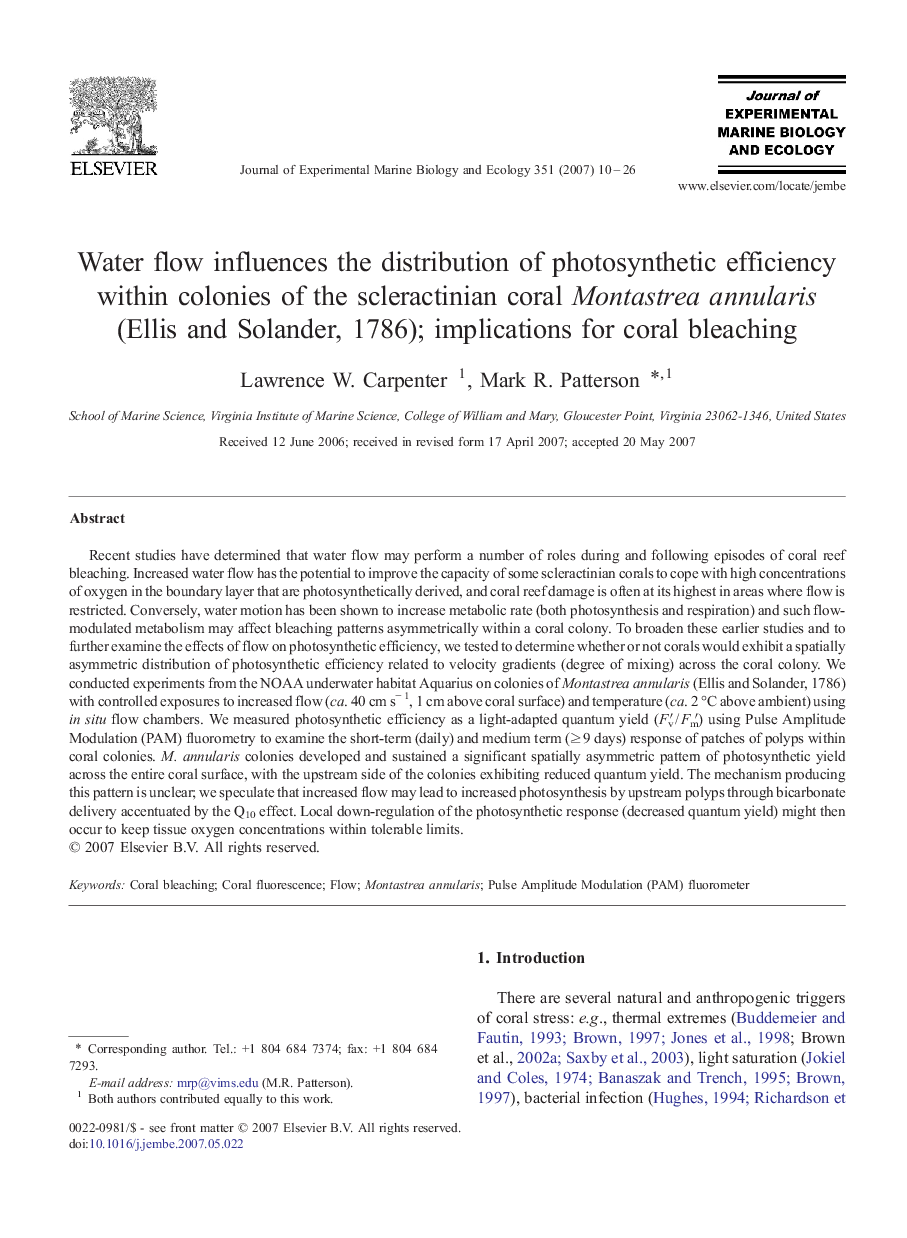| Article ID | Journal | Published Year | Pages | File Type |
|---|---|---|---|---|
| 4397533 | Journal of Experimental Marine Biology and Ecology | 2007 | 17 Pages |
Recent studies have determined that water flow may perform a number of roles during and following episodes of coral reef bleaching. Increased water flow has the potential to improve the capacity of some scleractinian corals to cope with high concentrations of oxygen in the boundary layer that are photosynthetically derived, and coral reef damage is often at its highest in areas where flow is restricted. Conversely, water motion has been shown to increase metabolic rate (both photosynthesis and respiration) and such flow-modulated metabolism may affect bleaching patterns asymmetrically within a coral colony. To broaden these earlier studies and to further examine the effects of flow on photosynthetic efficiency, we tested to determine whether or not corals would exhibit a spatially asymmetric distribution of photosynthetic efficiency related to velocity gradients (degree of mixing) across the coral colony. We conducted experiments from the NOAA underwater habitat Aquarius on colonies of Montastrea annularis (Ellis and Solander, 1786) with controlled exposures to increased flow (ca. 40 cm s− 1, 1 cm above coral surface) and temperature (ca. 2 °C above ambient) using in situ flow chambers. We measured photosynthetic efficiency as a light-adapted quantum yield (Fv′ / Fm′) using Pulse Amplitude Modulation (PAM) fluorometry to examine the short-term (daily) and medium term (≥ 9 days) response of patches of polyps within coral colonies. M. annularis colonies developed and sustained a significant spatially asymmetric pattern of photosynthetic yield across the entire coral surface, with the upstream side of the colonies exhibiting reduced quantum yield. The mechanism producing this pattern is unclear; we speculate that increased flow may lead to increased photosynthesis by upstream polyps through bicarbonate delivery accentuated by the Q10 effect. Local down-regulation of the photosynthetic response (decreased quantum yield) might then occur to keep tissue oxygen concentrations within tolerable limits.
